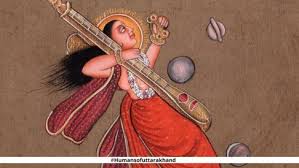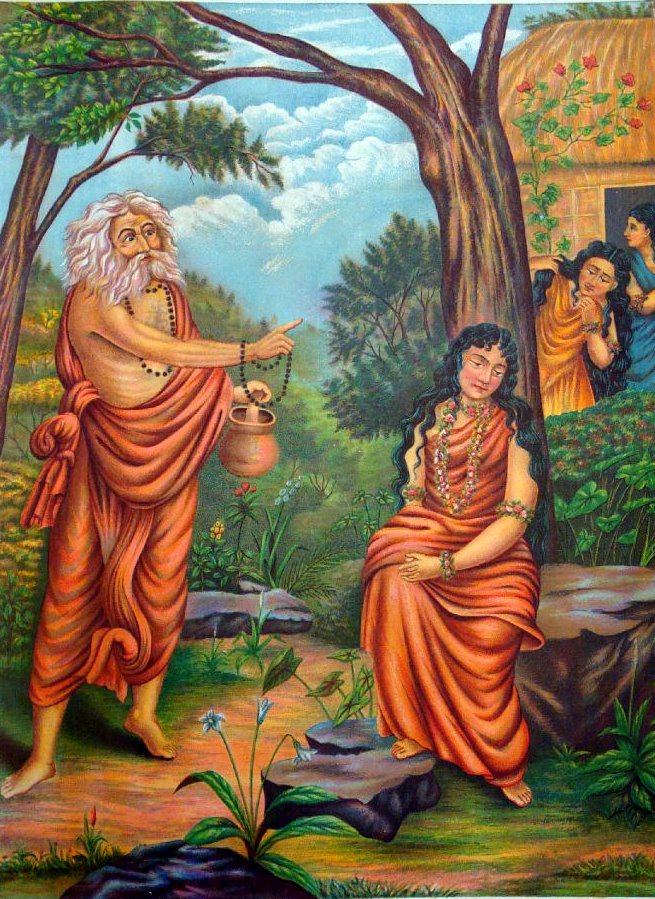
Why the Origin and Authenticity of Religious Scriptures Shouldn't Overshadow Their Teachings
Introduction
Religious scriptures are an essential part of human history, and they play a significant role in shaping people's beliefs, cultures, and worldviews. They provide a glimpse into the past and allow us to understand how people used to live and think. However, with the advancement of science and technology, people have become more skeptical about the authenticity and origin of religious texts. In the Indian context, Ramayana and Mahabharata are two such epics that often spark debates on their authenticity. While some argue that these texts are factual, others dismiss them as mere mythology. However, what is essential is to recognize that the core motive of these texts is not to be fact-checked but to teach people basic fundamental morals, values and principles.
Hinduism is one of the oldest religions in the world, and its scriptures and legends have played a significant role in shaping Indian culture and society. However, in recent times, there has been a growing debate about the authenticity and historical accuracy of Hindu texts and legends, such as the Ramayana and the Mahabharata.

Overview
The Ramayana is an epic poem that tells the story of Rama, a prince who is exiled from his kingdom and must rescue his wife from a demon king. The Mahabharata is another epic poem that tells the story of a great war between two clans of cousins. Both of these texts are considered to be sacred by Hindus, and their teachings have influenced Indian culture and society for centuries.
However, some people argue that these texts are not historically accurate and should be considered works of fiction rather than sacred texts. They point to inconsistencies in the texts and discrepancies between different versions of the same story as evidence that these texts are not historically accurate.
While it is true that there may be inconsistencies and discrepancies in these texts, this does not detract from the value of their teachings. The stories and characters in these texts serve as powerful metaphors for human behaviour and offer valuable lessons on how to live a good life.

For example, the character of Rama in the Ramayana is revered for his adherence to dharma, which is the Hindu concept of duty, righteousness, and morality. His story serves as a reminder of the importance of leading a righteous life and fulfilling one's duties, even in the face of adversity.
Similarly, the Mahabharata contains the Bhagavad Gita, which is considered one of the most sacred texts in Hinduism. The Bhagavad Gita is a dialogue between the warrior Arjuna and his charioteer Krishna, in which Krishna teaches Arjuna about the nature of reality and the importance of fulfilling one's duties without attachment to the outcome.
The teachings of these texts are not dependent on their historical accuracy or authenticity. Instead, they offer valuable insights into human behaviour and serve as a guide for how to live a good life.

It is also important to recognize that these texts have been passed down through an oral tradition for centuries before they were written down. Therefore, it is natural that there may be variations in the different versions of the same story. However, these variations do not diminish the value of the teachings contained in these texts.
The Purpose of Religious Scriptures
Religious scriptures are not meant to be historical documents that provide an accurate account of past events. Instead, they are meant to serve a higher purpose – to teach people about life and its lessons. Every religion has its set of scriptures that offer guidance on how to live a good life, be kind to others, and find inner peace. For instance, in Hinduism, the Bhagavad Gita is a sacred text that teaches the importance of duty, karma, and dharma.
The Importance of Moral Lessons
Religious texts are not limited to the religious aspects of life; they also provide insights into human nature and behaviour. These texts offer valuable lessons on morality and ethics and help people develop a sense of right and wrong. For example, the story of Lord Rama in the Ramayana teaches the importance of loyalty, righteousness, and duty. The story of the Pandavas in the Mahabharata teaches the importance of truth, courage, and brotherhood. These lessons are not only relevant to the time when these texts were written but also hold value in the present times.

The Debate on the Authenticity of Religious Texts
The authenticity of religious texts has been a topic of debate for centuries. Some people argue that these texts are factual and provide an accurate account of the past. Others believe that these texts are mere myths and legends that hold no historical significance. However, it is important to understand that the authenticity of these texts should not overshadow their teachings. Regardless of whether these texts are factual or not, they still hold value as they teach people about morality and ethics.
The Role of Mythology in Religious Texts
Religious texts are often referred to as mythology, which means a collection of stories or myths. However, mythology should not be considered as something that is untrue or irrelevant. Myths and legends are often used to convey a deeper truth or meaning. For example, the story of the demon king Ravana in the Ramayana teaches us about the dangers of ego and pride. Similarly, the story of Lord Shiva in the Hindu mythology teaches us about the cycle of birth, death, and rebirth.

The Historical Significance of Religious Texts
Religious texts provide valuable insights into history and culture. They give us a glimpse into how people used to live, their beliefs, and their values. For example, the Vedas, the oldest religious texts in Hinduism, provide insights into the social, economic, and political conditions in ancient India. Similarly, the Quran provides insights into the culture and traditions of the Arab world during the time of its revelation.
The Limitations of Historical Accuracy
However, it is important to recognize that religious texts cannot be considered as accurate historical documents. They were written in a time when the concept of historical accuracy was not as important as it is today. Therefore, it is important to approach these texts with a critical and analytical mindset rather than blindly accepting everything they say as fact.

The Dangers of Overemphasizing Authenticity
Overemphasising the authenticity of religious texts can lead to dangerous consequences. It can cause people to become intolerant of other religions and cultures and can fuel religious conflicts. History is replete with examples of wars and conflicts that were started because of religious differences. Therefore, it is essential to recognize the core motive of religious texts and to focus on the teachings they offer rather than getting bogged down in debates about their authenticity.
The Relevance of Religious Texts in Modern Times
Religious texts have withstood the test of time and continue to be relevant even in modern times. They offer guidance on how to deal with modern-day issues such as stress, anxiety, and depression. For example, the concept of mindfulness, which has gained immense popularity in recent years, has its roots in Buddhism. Similarly, the teachings of the Bhagavad Gita on detachment and self-realisation are relevant even in today's fast-paced world.


The Importance of Interpreting Religious Texts in a Contemporary Context
Interpreting religious texts in a contemporary context is essential to ensure their relevance in modern times. The way people lived and thought in ancient times was vastly different from how people live and think today. Therefore, it is important to interpret these texts in a way that makes sense in today's world. For example, the concept of non-violence, which is central to Jainism, can be interpreted in a way that is relevant to modern-day issues such as animal rights and environmentalism.
The Need for a Balanced Approach
A balanced approach to interpreting religious texts is essential to ensure that their teachings are not misinterpreted or taken out of context. It is important to recognize that these texts were written in a specific historical and cultural context and that their teachings may not be applicable in all situations. Therefore, it is important to approach these texts with an open mind and to interpret them in a way that is relevant to modern times.

Conclusion
In conclusion, the origin and authenticity of religious scriptures should not overshadow their teachings. Religious texts were created with the core motive of teaching people basic fundamental morals, values, and principles. They provide valuable insights into human nature and behaviour and offer guidance on how to live a good life. Therefore, it is important to focus on the teachings they offer rather than getting bogged down in debates about their authenticity. A balanced and contemporary approach to interpreting these texts is essential to ensure their relevance in modern times.

The debate about the authenticity and historical accuracy of Hindu texts and legends is a futile one. Instead, we should focus on the teachings they offer and how they can help us live a good life. These texts have played a significant role in shaping Indian culture and society, and their teachings continue to be relevant even in modern times. By interpreting these texts in a contemporary context and approaching them with an open mind, we can gain valuable insights into human behaviour and lead a more fulfilling life.
By Manshi Singh
(The images used in this blog post are not owned by Anime Devta, they are just to help the readers)

